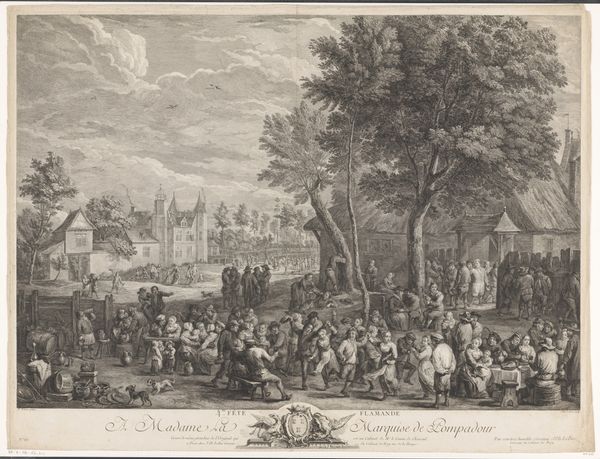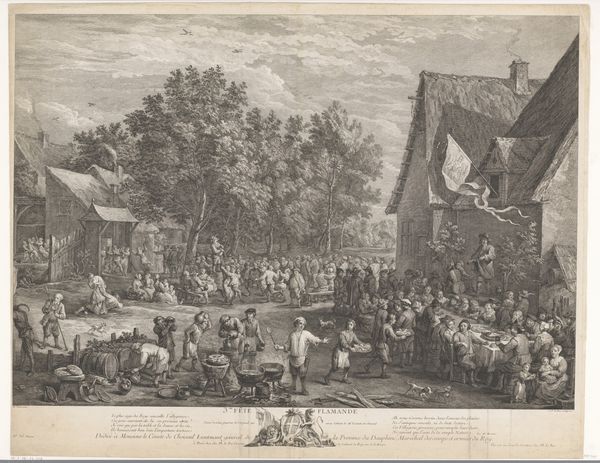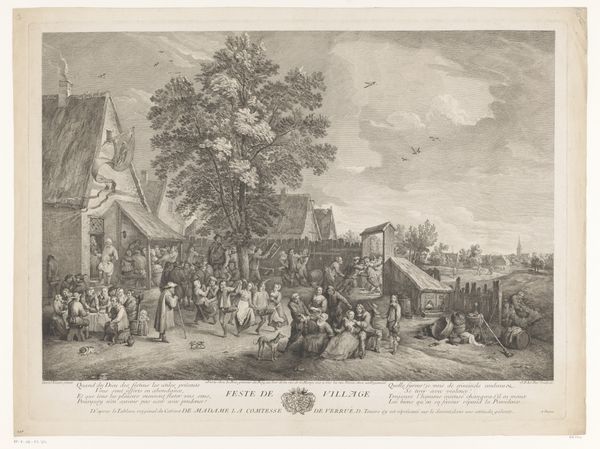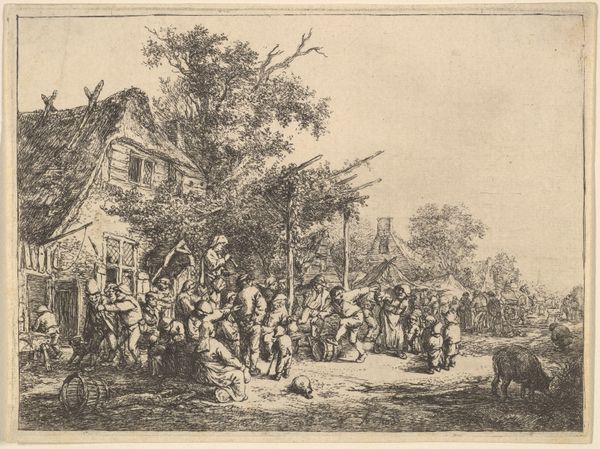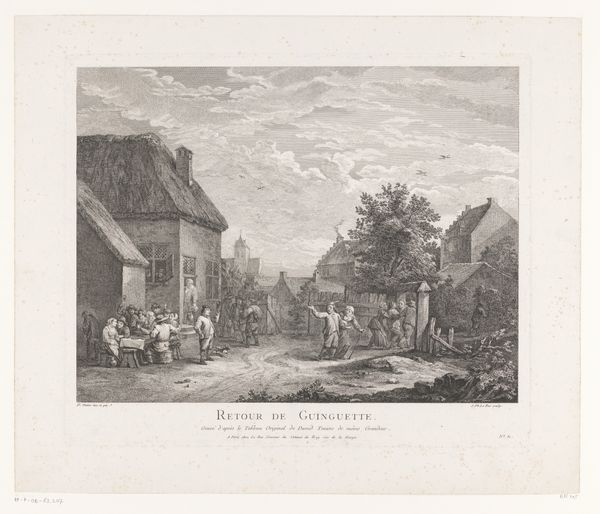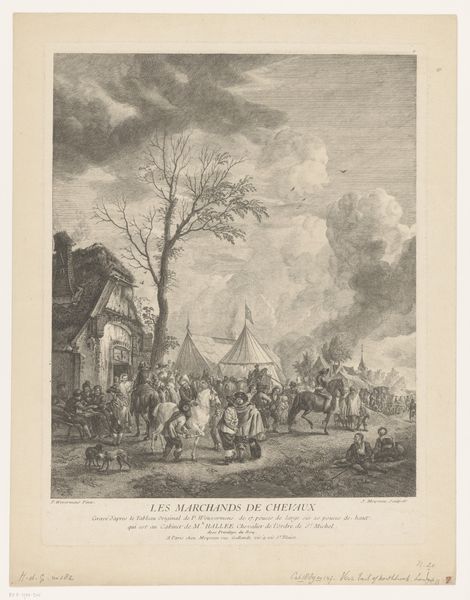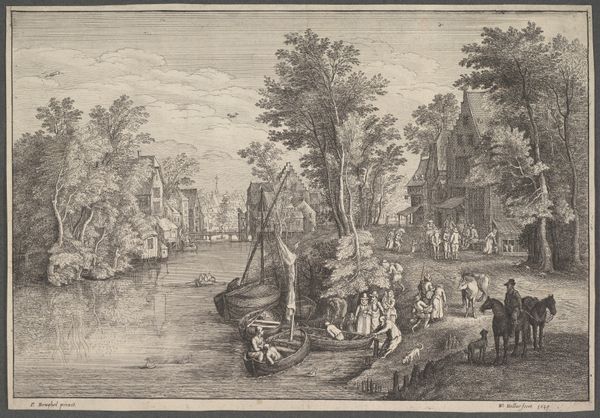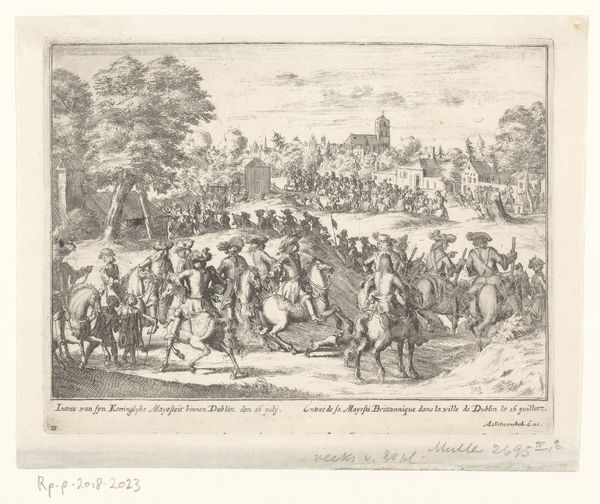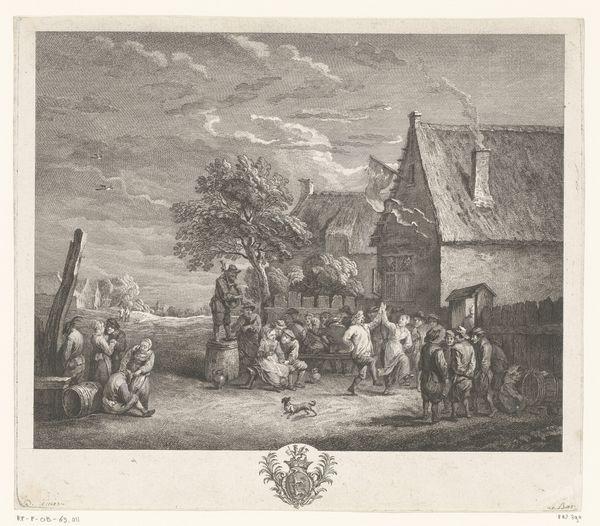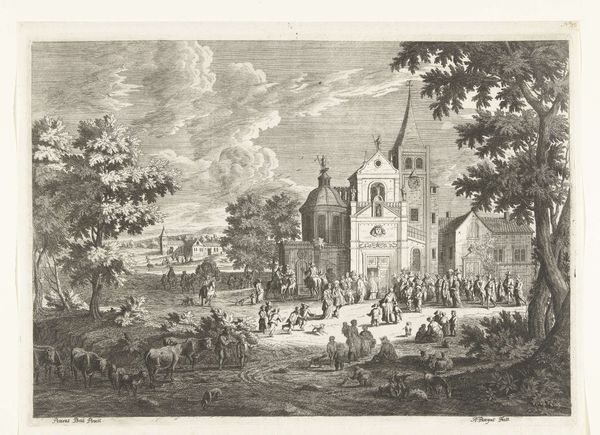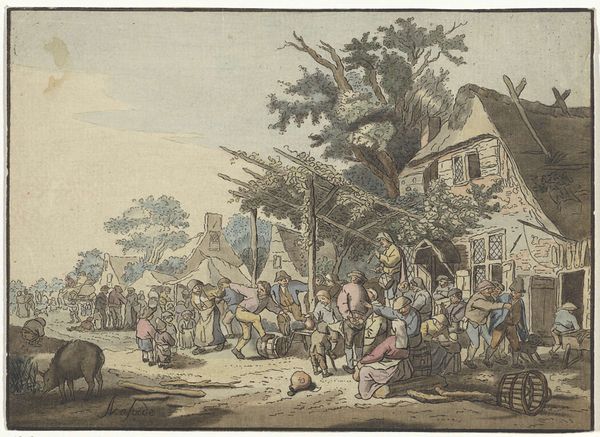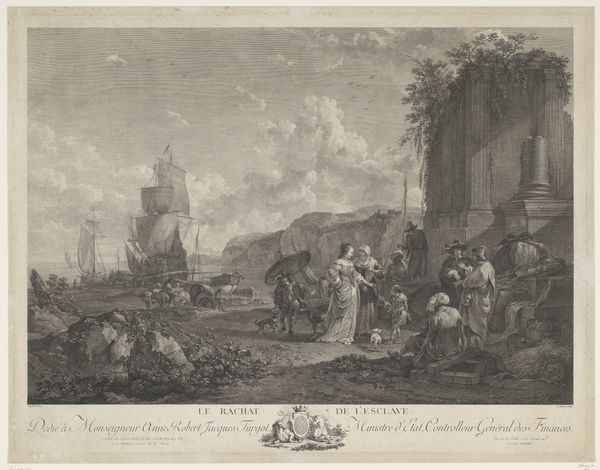
Dimensions: height 284 mm, width 362 mm
Copyright: Rijks Museum: Open Domain
Editor: We're looking at "Huwelijksfeest," or "Wedding Feast," an engraving made around 1775 by Jacques Philippe Le Bas. The scene is packed with figures celebrating; it feels so full of life. What strikes you when you see this print? Curator: As a materialist, I'm drawn to consider the physical process of its creation. Think of the engraver, meticulously using tools to incise lines onto a metal plate, building up this incredibly detailed scene through labor. Do you consider how the relative availability and cost of printmaking materials might have contributed to the work's intended audience and broader social function? Editor: That's a side of art history I hadn’t thought much about! So, it's not just about the party depicted, but the conditions that allowed this image to be reproduced and consumed? Curator: Exactly. The creation of this image involved labour, resources, and systems of distribution. Consider the socio-economic realities embedded within the print's creation and circulation. Are we truly separate from the craft? Is it something apart, above the every-day processes of its making? Editor: So by understanding the work's production and availability, we get a richer sense of who it was *for* and how it participated in the society of its time. That really shifts how I view this piece! Curator: Precisely. It’s not just about aesthetics or subject matter, but about unpacking the entire system of its making. Thinking this way can open new perspectives on even familiar artworks. Editor: I'll definitely carry this with me as I study art. Thanks for shedding light on that material dimension!
Comments
No comments
Be the first to comment and join the conversation on the ultimate creative platform.

